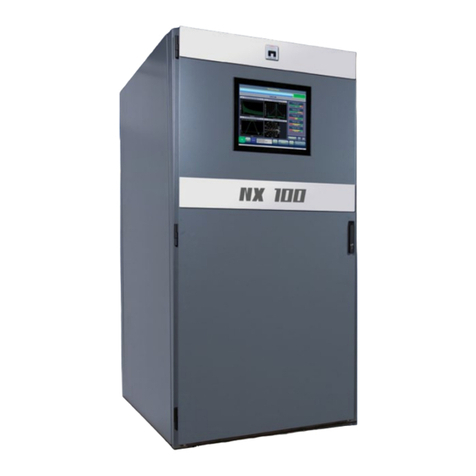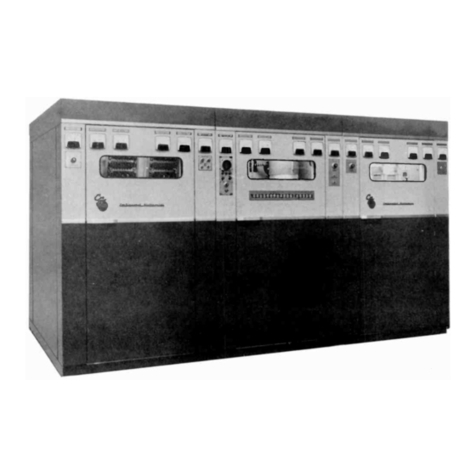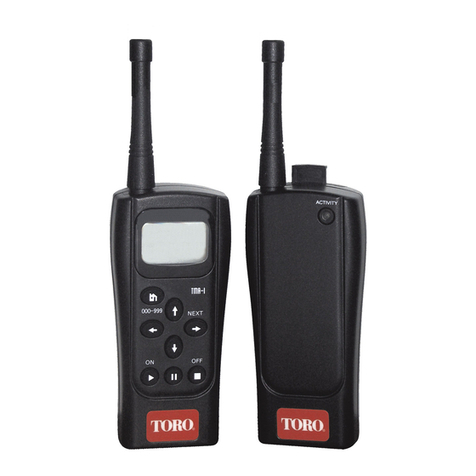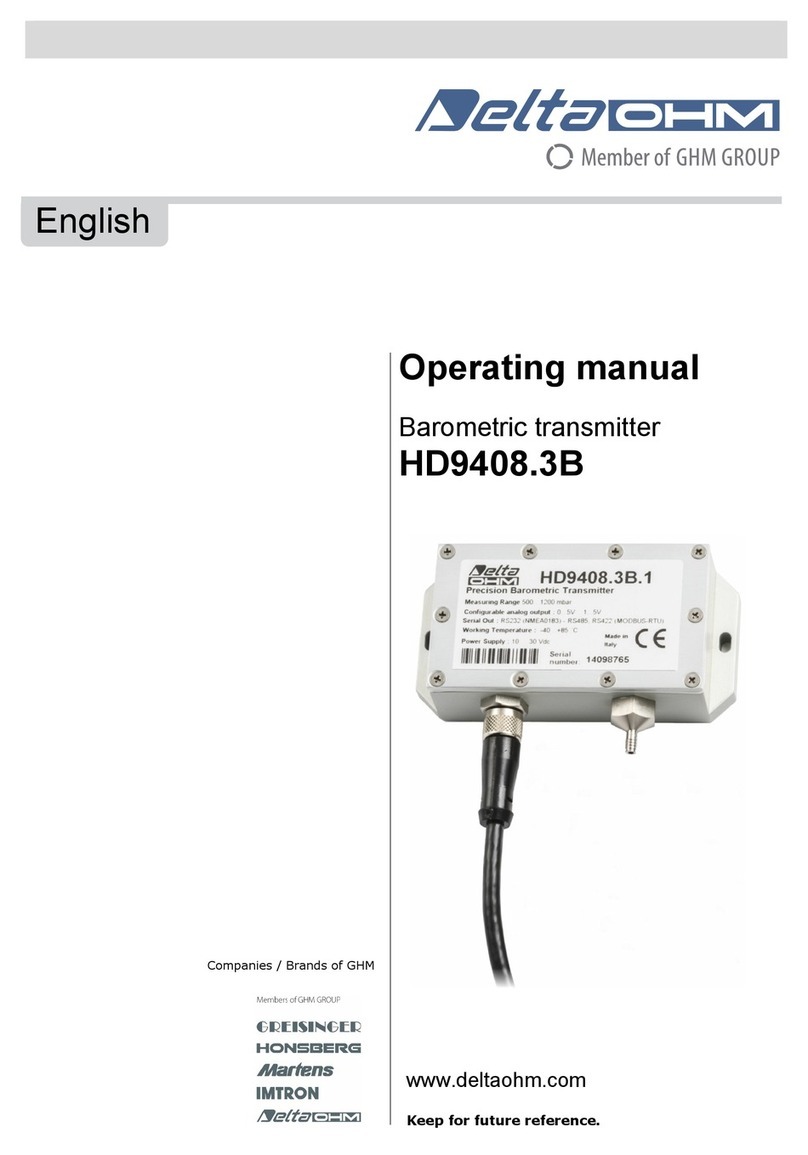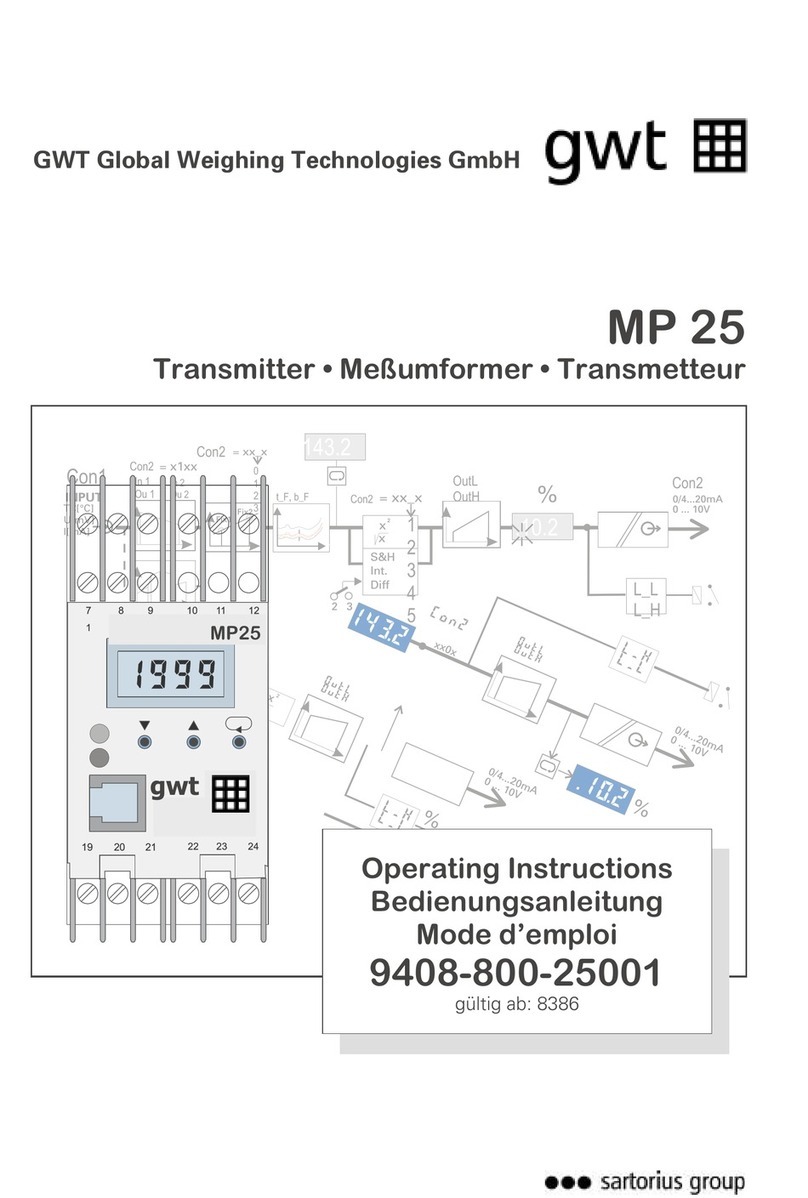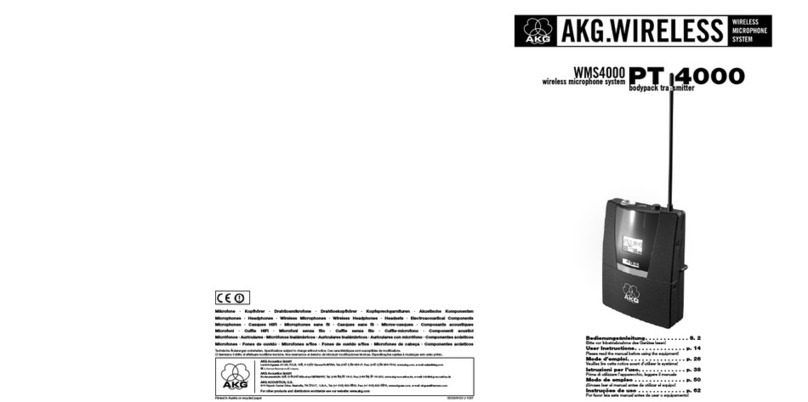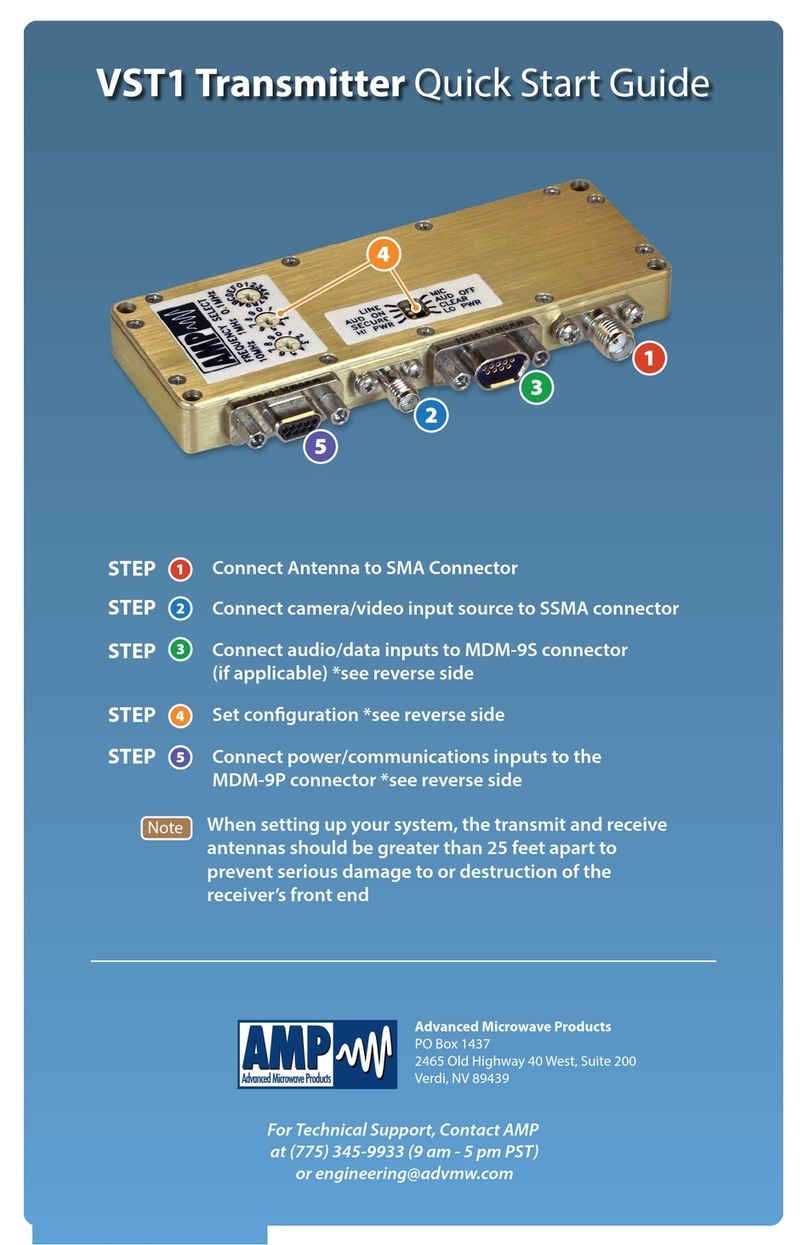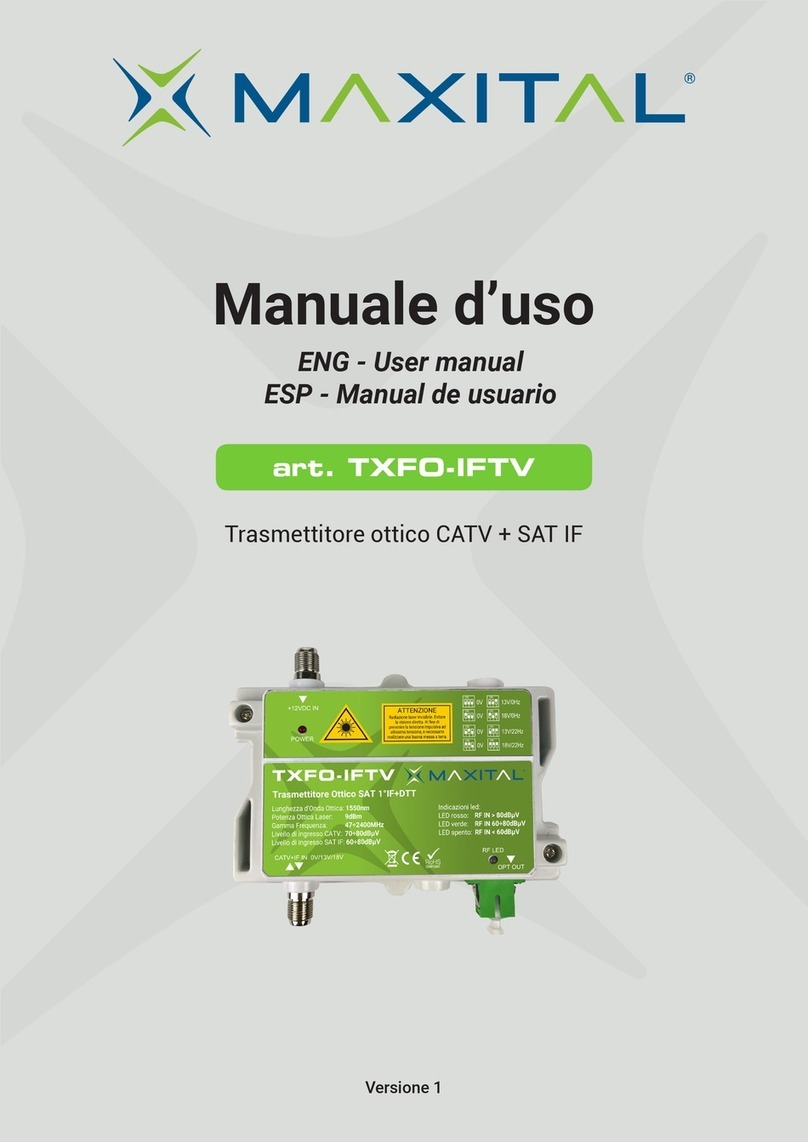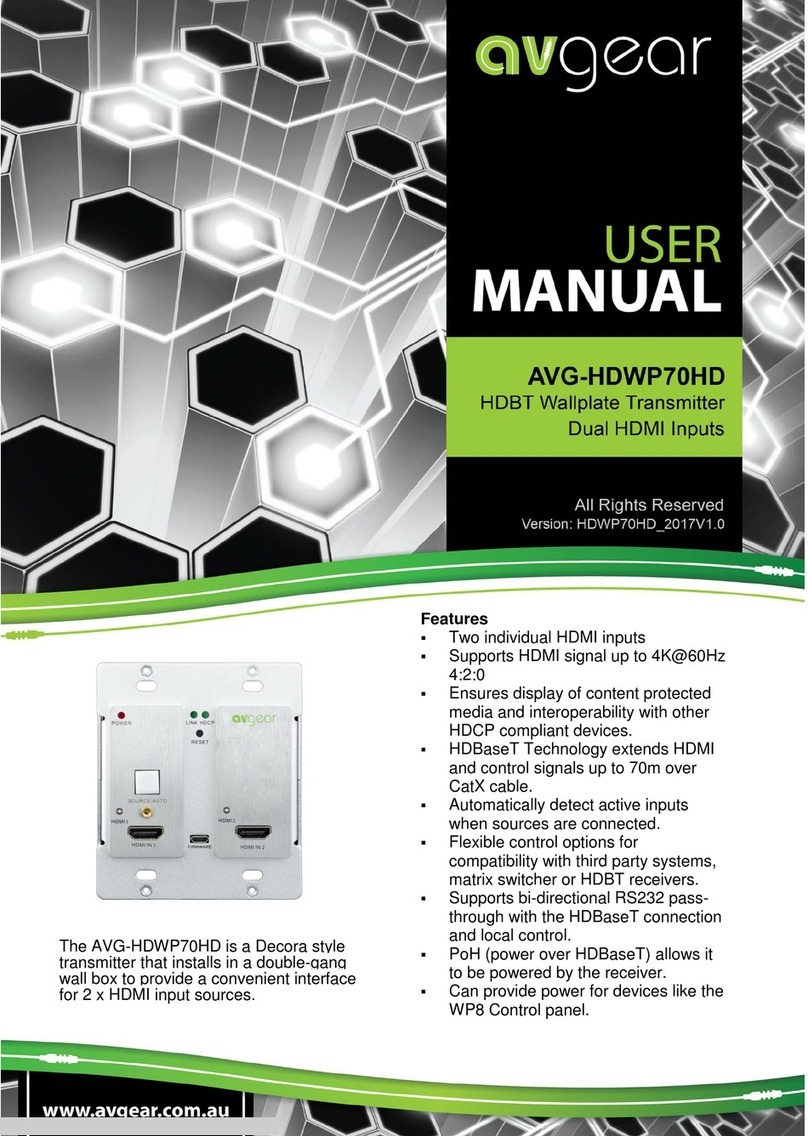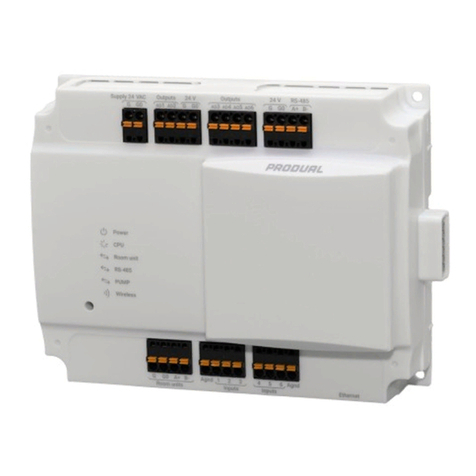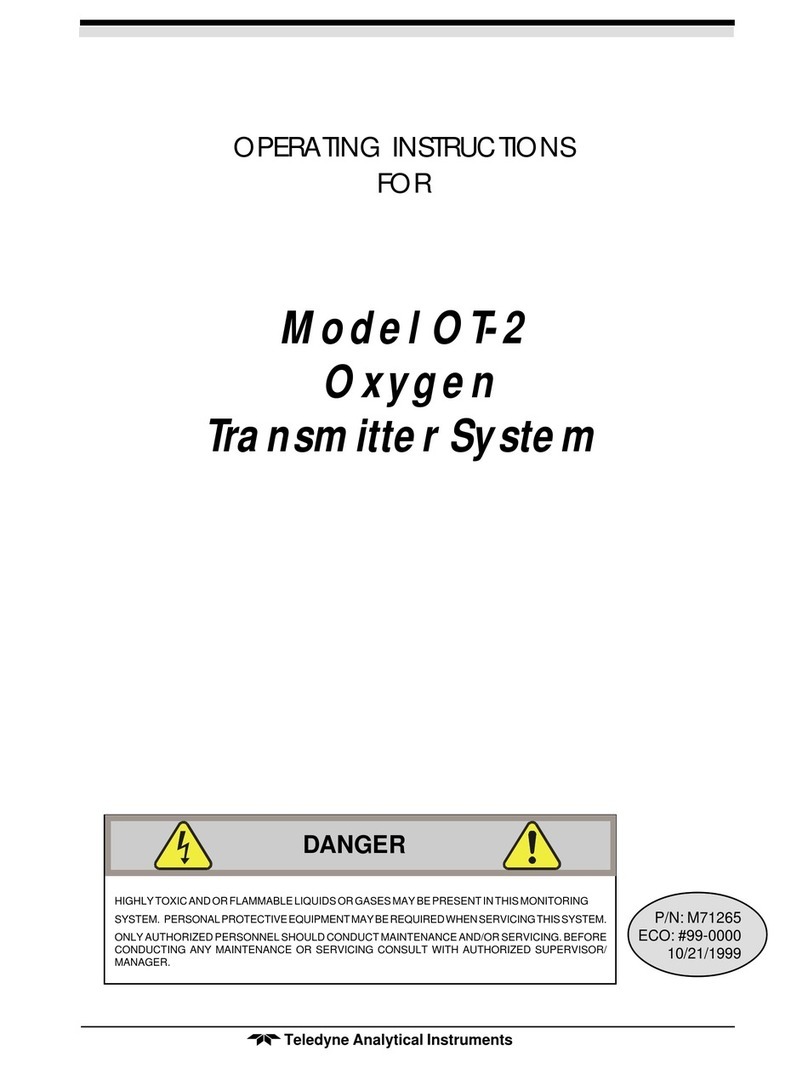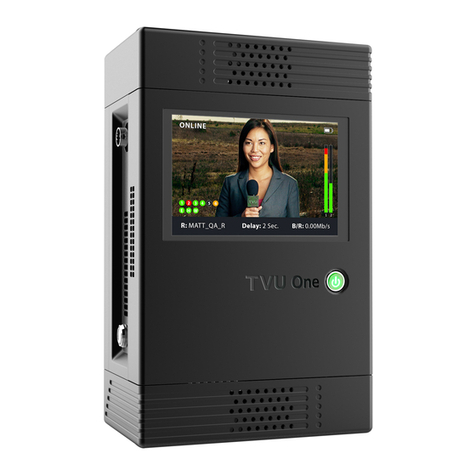Michell Instruments Easidew PRO I.S. User manual

Easidew PRO I.S.
Process Dew-Point Transmitter
User’s Manual
Easidew PRO I.S.
Process Dewpoint Transmitter
97130 Issue 15
May 2018

Please fill out the form(s) below for each instrument that has been purchased.
Use this information when contacting Michell Instruments for service purposes.
Transmitter
Code
Serial Number
Invoice Date
Location of Instrument
Tag No
Transmitter
Code
Serial Number
Invoice Date
Location of Instrument
Tag No
Transmitter
Code
Serial Number
Invoice Date
Location of Instrument
Tag No

© 2018 Michell Instruments
This document is the property of Michell Instruments Ltd. and may not be copied or
otherwise reproduced, communicated in any way to third parties, nor stored in any Data
Processing System without the express written authorization of Michell Instruments Ltd.
Easidew PRO I.S.
For Michell Instruments' contact information please go to
www.michell.com

Easidew PRO I.S. User’s Manual
iv 97130 Issue 15, May 2018
Figures
Figure 1 Wall-Mount Bracket ....................................................................................3
Figure 2 Transmitter Mounting - Sensor Block............................................................4
Figure 3 Transmitter Mounting - Pipe or Duct.............................................................5
Figure 4 Transmitter Mounting with Adapter .............................................................6
Figure 5 Wire and Crimp Details ...............................................................................7
Figure 6 Terminal Block Connection ..........................................................................7
Figure 7 Hazardous Area Connection.........................................................................8
Figure 8 Maximum Load of Easidew PRO I.S. - Including Cable Resistance .................8
Figure 9 Indication of Dead Space ..........................................................................10
Figure 10 Replacement of Sensor Guard ...................................................................11
Figure 11 Dimensions ..............................................................................................15
1 INTRODUCTION ................................................................................................1
1.1 Features ............................................................................................................ 1
2 INSTALLATION ..................................................................................................2
2.1 Unpacking the Instrument................................................................................... 2
2.2 Transmitter Mounting.......................................................................................... 2
2.2.1 Wall Mount Bracket ....................................................................................... 3
2.2.2 Transmitter Mounting - Sample Block (Optional)............................................. 4
2.2.3 Transmitter Mounting - Direct Pipeline Connection........................................... 5
2.2.4 Transmitter Mounting - With Additional Process Connection Adapter ................ 6
2.3 Preparation of the Sensor Cable .......................................................................... 7
2.4 Electrical Schematic ............................................................................................ 8
2.4.1 Electrical Boundaries ..................................................................................... 8
3 OPERATION ......................................................................................................9
3.1 Measurement and Configuration .......................................................................... 9
3.2 Sampling Hints ................................................................................................... 9
4 MAINTENANCE................................................................................................11
Contents
Safety ................................................................................................................................vi
Electrical Safety ...........................................................................................................vi
Pressure Safety............................................................................................................vi
Toxic Materials .............................................................................................................vi
Repair and Maintenance ...............................................................................................vi
Calibration...................................................................................................................vi
Safety Conformity ........................................................................................................vi
Abbreviations.....................................................................................................................vii
Warnings .......................................................................................................................... viii

Easidew PRO I.S. User’s Manual
Michell Instruments v
Appendices
Appendix A Technical Specifications.............................................................................. 13
A.1 Dimensions ................................................................................. 14
Appendix B System Drawings....................................................................................... 17
B.1 Baseefa Approved System Drawing ............................................... 17
B.2 FM Approved System Drawing ...................................................... 18
B.3 CSA Approved System Drawing..................................................... 19
Appendix C Hazardous Area Certification ...................................................................... 21
C.1 Product Standards ....................................................................... 21
C.2 Product Certification .................................................................... 21
C.3 Global Certificates/Approvals ........................................................ 21
C.4 Terminal Parameters .................................................................... 21
C.5 Special Conditions........................................................................ 22
C.6 Maintenance and Installation........................................................22
Appendix D Quality, Recycling & Warranty Information................................................... 24
Appendix E Return Document & Decontamination Declaration........................................ 26

Easidew PRO I.S. User’s Manual
vi 97130 Issue 15, May 2018
Safety
The manufacturer has designed this equipment to be safe when operated using the procedures
detailed in this manual. The user must not use this equipment for any other purpose than that
stated. Do not apply values greater than the maximum value stated.
This manual contains operating and safety instructions, which must be followed to ensure the safe
operation and to maintain the equipment in a safe condition. The safety instructions are either
warnings or cautions issued to protect the user and the equipment from injury or damage. Use
competent personnel using good engineering practice for all procedures in this manual.
Electrical Safety
The instrument is designed to be completely safe when used with options and accessories supplied
by the manufacturer for use with the instrument.
Pressure Safety
DO NOT permit pressures greater than the safe working pressure to be applied to the instrument.
The specified safe working pressure is 45 MPa (450 barg / 6500 psig). Refer to Appendix A, Technical
Specifications.
Toxic Materials
The use of hazardous materials in the construction of this instrument has been minimized. During
normal operation, it is not possible for the user to come into contact with any hazardous substance,
which might be employed in the construction of the instrument. Care should, however, be exercised
during maintenance and the disposal of certain parts.
Repair and Maintenance
The instrument must be maintained either by the manufacturer or an accredited service agent. Refer
to www.michell.com for details of Michell Instruments’ worldwide offices contact information.
Calibration
The recommended calibration interval for the Easidew PRO I.S. is 12 months. The instrument should
be returned to Michell Instruments or one of their accredited service agents for re-calibration.
Safety Conformity
This product meets the essential protection requirements of the relevant EU directives. Further
details of applied standards may be found in the Technical Specifications, Appendix A.

Easidew PRO I.S. User’s Manual
Michell Instruments vii
Abbreviations
The following abbreviations are used in this manual:
bara bar absolute
barg pressure unit (=100 kP or 0.987 atm) gauge
°C degrees Celsius
°F degrees Fahrenheit
DC direct current
m micro-meter
lbf-ft pound foot
Nl/min normal liters per minute
mA milliampere
Mpa megapascal
m/sec meters per second
mW milli Watts
nF nano-Farad
Nm Newton meter
ppmVparts per million by volume
RH relative humidity
scfh standard cubic feet per hour
scfs standard cubic feet per second
V Volts

Easidew PRO I.S. User’s Manual
viii 97130 Issue 15, May 2018
Warnings
The following general warning listed below is applicable to this instrument. It is repeated
in the text in the appropriate locations.
!Where this hazard warning symbol appears in the following
sections it is used to indicate areas where potentially hazardous
operations need to be carried out.

Easidew PRO I.S. User’s Manual
Michell Instruments 1
INTRODUCTION
1 INTRODUCTION
The Easidew PRO I.S. has been manufactured, tested and calibrated to the highest
available standards and should arrive in perfect working order, ready for installation into
a gas or liquid measurement application.
For questions about the instrument or how to install and operate it, contact your local
representative. Refer to www.michell.com for details of Michell Instruments’ worldwide
offices’ contact information.
1.1 Features
The Easidew PRO I.S. is a continuous, on-line, 4-20 mA transmitter for the measurement
of moisture content in air, other non-corrosive gases and non-polar liquids. It is designed
specifically for use within Zone 0, 1 & 2 hazardous areas.
Its key features are:
• Measurement range -110 to +20°Cdp (-166 to +68°Fdp)
• Moisture in gases (ppmV) or liquids (ppmW)
• Hazardous area certifications (ATEX, IECEx, FM, CSA, GOST)
• Calibration certificate (UKAS and NIST)
• Accuracy ±1°Cdp
• 2-wire and linear 4-20 mA output
• Non-standard outputs configurability

Easidew PRO I.S. User’s Manual
297130 Issue 15, May 2018
INSTALLATION
2 INSTALLATION
2.1 Unpacking the Instrument
On delivery, please check that all the following standard components are present in the
packing box:
• Easidew PRO I.S. Transmitter
• Bonded seal
• Certificate of calibration
• 3 off cable crimps
• Mounting bracket (optional)
The Easidew PRO I.S. is protected within the main packaging by a blue cap covering
the transmitter connector and a small desiccant capsule installed inside the plastic
protective transit cover. Neither of these items is required for the operation of the
Easidew PRO I.S.
Prior to installation of the Easidew PRO I.S., unscrew and remove the plastic protective
transit cover and retain for future use. Take care to prevent any contamination of the
transmitter before installation. NOTE: Do not handle the sintered guard.
2.2 Transmitter Mounting
The Easidew PRO I.S. Transmitter can be mounted either in a flow-through sampling
block (optional extra) or directly inserted into a pipe or duct and can be operated
at pressures up to 45 MPa (450 barg / 6500 psig) when fitted with the bonded seal
provided.
For mounting instructions see Sections 2.2.2 or 2.2.3.
When installed, fully tighten using a wrench until the seal is fully compressed and to the
following torque settings:
• 5/8” - 18 UNF 30.5 Nm (22.5 ft-lbs)
The recommended fluid flow rate, when mounted in the optional sampling block, is 1 to
5 Nl/min (2.1 to 10.6 scfh). However, for direct insertion applications, fluid flow can be
from static to 10 m/sec (32.8 fps).

Easidew PRO I.S. User’s Manual
Michell Instruments 3
INSTALLATION
After installation into the flow stream, the Easidew PRO I.S. housing (provided it is not
mounted onto a wall bracket) may be positioned at any angle, through approximately
330º of rotation, to allow for the cable gland positioning. To position the housing -
loosen the large clamping nut sufficiently to allow free rotation of the sensor assembly
within the transmitter body.
!The Easidew PRO I.S. is fitted with a mechanical stop to
prevent over-rotation of the sensor assembly within the
transmitter body - this could damage the sensor wires.
Rotate the sensor housing until the cable gland is in the desired position. While firmly
holding the housing in position, re-tighten the large clamp nut up against the housing
seal using a spanner/wrench of the correct size. NOTE: Do not apply excessive
force.
2.2.1 Wall Mount Bracket
The Easidew PRO I.S. can be supplied with an optional wall-mounting bracket. This
allows the customer to physically support the transmitter, ensuring that the stress on
the mounting flange is kept to a minimum.
The bracket needs to be attached to the Easidew PRO I.S. (see
Figure 1)
using the
hex screws provided. It can be fitted either horizontally or vertically and can then be
attached to a wall or plate to provide support for the transmitter.
Figure 1
Wall-Mount Bracket

Easidew PRO I.S. User’s Manual
497130 Issue 15, May 2018
INSTALLATION
2.2.2 Transmitter Mounting - Sample Block (Optional)
!The following procedure must be carried out by a qualified
installation engineer.
To mount the transmitter into the sensor block (preferred method), proceed as follows,
refer to
Figure 2.
1. Remove the protective cover (2) (and its desiccant capsule) from the tip of
the transmitter (1).
2. Fit the seal (4) over the threaded part of the transmitter body.
!WARNING: Under no circumstances should the sensor guard be
handled with the fingers.
3. Screw the transmitter (1) into the sample block (3) and tighten to the
recommended torque setting (see Section 2.2). NOTE: Use the flats of
the hexagonal nut and not the sensor body.
4. Connect a cable (5) to the connector terminal block (see Section 2.3).
1
2
3
5
4
Easidew PRO I.S.
Process Dewpoint Transmitter
Easidew PRO I.S.
Process Dewpoint Transmitter
Easidew PRO I.S.
Process Dewpoint Transmitter
Easidew PRO I.S.
Process Dewpoint Transmitter
h
Optional cable
and gland (available
on request)
Figure 2
Transmitter Mounting - Sensor Block

Easidew PRO I.S. User’s Manual
Michell Instruments 5
INSTALLATION
2.2.3 Transmitter Mounting - Direct Pipeline Connection
The transmitter may be directly mounted into a pipe or duct as shown in
Figure 3.
CAUTION: Do not mount the transmitter too close to the
bottom of a bend where any condensate in the pipeline
might collect and saturate the probe.
The pipe or duct will require a thread to match the transmitter body thread. Fixing
dimensions are shown in
Figure 3.
For circular pipework, to ensure the integrity of a
gas tight seal, a mounting flange will be required on the pipework in order to provide a
flat surface to seal against.
The following procedure must be carried out by
competent personnel.
1. Ensure that the protective cover (and its desiccant capsule) has been
removed from the tip of the transmitter.
WARNING: Under no circumstances should the
sensor guard be handled with the fingers.
2. Fit a bonded seal (2) over the threaded part of the transmitter body.
3. Screw the transmitter into the pipe (1). Tighten enough to obtain a gas
tight seal. (Torque will depend upon the pipeline material.) NOTE: Do
not overtighten or the thread on the pipework may be stripped.
Easidew PRO I.S.
Process Dewpoint Transmitter
Easidew PRO I.S.
Process Dewpoint Transmitter
1
2
12
48mm
Figure 3
Transmitter Mounting - Pipe or Duct

Easidew PRO I.S. User’s Manual
697130 Issue 15, May 2018
INSTALLATION
2.2.4 Transmitter Mounting - With Additional Process Connection Adapter
!The following procedure must be carried out by a qualified
installation engineer.
To mount the adapter into the transmitter, proceed as follows (see
Figure 4)
:
1. Ensure that the protective cover (2), and its desiccant capsule (2a), have
been removed from the tip of the transmitter.
2. Fit the bonded seal (3) over the threaded part of the transmitter body.
3. Screw the adapter (4) onto the threaded part of the transmitter and tighten
to 30.5 Nm (22.5 ft-lbs). NOTE: Use the flats of the hexagonal nut and
not the sensor body.
!WARNING: Under no circumstances should the sensor guard be
handled with the fingers.
4. Screw the transmitter (1) with its seal (3) and adapter (4) into the sample
block (see Section 2.2.2) or pipeline (see Section 2.2.3) and fully tighten
using a wrench until the seal is fully compressed and to the following torque
settings:
G 1/2” BSP 56 Nm (41.3 ft-lbs)
3/4” - 16 UNF ` 40 Nm (29.5 ft-lbs)
1/2” NPT Use a suitable sealant e.g. PTFE tape using
correct taping procedures
NOTE: Use the flats of the hexagonal nut and not the sensor body.
Easidew PRO I.S.
Process Dewpoint Transmitter
Easidew PRO I.S.
Process Dewpoint Transmitter
1
2
34
2a
Figure 4
Transmitter Mounting with Adapter

Easidew PRO I.S. User’s Manual
Michell Instruments 7
INSTALLATION
2.3 Preparation of the Sensor Cable
The sensor cable is NOT supplied as standard.
The crimps supplied must be fitted onto any cable installed
into the connector in order to comply with Hazardous Area
Certification of the product.
When making a cable assembly it is important that the cable is correctly terminated
(see below).
NOTE:
Figure 5
shown below, should be followed in detail. The crimps should
be applied such that there is no possibility of a conductor strand of a core
becoming free.
When the crimp is made it should have a minimum of 2 positions of crimping. After the
crimp is made it should be trimmed to a length of 5mm.
10
mm
Figure 5
Wire and Crimp Details
Cable connection to the Easidew PRO I.S. is made via the connector terminal block.
When the crimps are installed into the connector terminal block ensure they are fully
inserted, before tightening the terminal clamping screws.
NOTE: Ensure the assembled green wire in terminal 3 remains connected.
1 2 3 4
Figure 6
Terminal Block Connection
When all wire connections are made, ensure that there is a minimum clearance distance
and a minimum creepage distance in air of 2mm (0.8”) between each terminal.

Easidew PRO I.S. User’s Manual
897130 Issue 15, May 2018
INSTALLATION
2.4 Electrical Schematic
NOTE: The screen/shield should be connected for maximum performance and
to avoid interference.
Always connect the 4-20 mA return signal to a suitable load
(see
Figure 7)
before the power is applied. Without this
connection, the transmitter may be damaged if allowed to
operate for prolonged periods.
1 2 3 4
SAFE AREAHAZARDOUS AREA
+ 4/20mA LOAD
+VS (20 to 35 V DC)
VS -
+
-
KFD2-STC4-Ex1 H
KFD0-CS-Ex2.50p
KFD2-CR-Ex1.20200
KFD2-CR-Ex1.30200
KFD0-CS-Ex1.50P
MTL5041
MTL5040
MTL5541
Figure 7
Hazardous Area Connection
1. Connect cable screen to cable gland.
2. Refer to system drawing in Appendix B.
2.4.1 Electrical Boundaries
100
200
300
400
500
600
12 14 16 18 20 22 24 26 28
Resistance (ohms)
Supply Voltage
Figure 8
Maximum Load of Easidew PRO I.S. - Including Cable Resistance

Easidew PRO I.S. User’s Manual
Michell Instruments 9
OPERATION
3 OPERATION
3.1 Measurement and Configuration
The Easidew PRO I.S. can be configured to provide an output of 4-20 mA (2-wire
connection) for the following:
Dew point -110 to +20°C (-166 to +68°F)
Moisture content in gas 0 - 3000 ppmV
Moisture content in liquids 0 - 3000 ppmW
The Easidew PRO I.S. can be purchased factory configured as required. Alternatively, the
Easidew PRO I.S. can be configured by the customer, using the Easidew Communications
Kit (EPR-CK) and Easidew Application Software. The Easidew Communications Kit can
be purchased from Michell Instruments or a local representative. For a free copy of the
Application Software contact Michell Instruments’ UK office (see www.michell.com for
details of Michell’s contact information).
For moisture content in gas, the calculation from the measured dew point is assumed to
be at atmospheric pressure. Alternatively, a fixed gas pressure needs to be programmed
into the Easidew PRO I.S.
For moisture content measurement in liquid, the Easidew PRO I.S. requires the saturation
constant of the liquid to be programmed into the transmitters, either at the factory or
by the customer using the Application Software.
The transmitter requires a 6-point look-up table for saturation constants up to 3000
ppmWover the temperature range 0 to +50°C (+32 to +122°F). Saturation constants
for 8 common liquids can be programmed into the Easidew PRO I.S. via the Application
Software. Alternatively, the user can program saturation constants manually. The
Application Software Help file provides detailed instructions on how to perform this task.
3.2 Sampling Hints
Operation is very simple, assuming the following installation techniques are adhered to:
Be Sure the Sample is Representative of the Gas Under Test:
The sample point should be as close to the critical measurement point as possible. Also,
never sample from the bottom of a pipe as entrained liquids may be drawn into the
sensing element.

Easidew PRO I.S. User’s Manual
10 97130 Issue 15, May 2018
OPERATION
Minimize Dead Space in Sample Lines:
Dead space causes moisture entrapment points, increased system response times and
measurement errors, as a result of the trapped moisture being released into the passing
sample gas and causing an increase in partial vapor pressure.
Deadspace
i
Figure 9
Indication of Dead Space
Remove Any Particulate Matter or Oil from the Gas Sample:
Particulate matter at high velocity can damage the sensing element and similarly, at
low velocity, they may ‘blind’ the sensing element and reduce its response speed. If
particulate, such as degraded desiccant, pipe scale or rust is present in the sample gas,
use an in-line filter, as a minimum level of protection. For more demanding applications
Michell Instruments offers a range of sampling systems (for more information contact
www.michell.com).
Use High Quality Sample Tube and Fittings:
Michell Instruments recommends that, wherever possible, stainless steel tubing and
fittings should be used. This is particularly important at low dew points since other
materials have hygroscopic characteristics and adsorb moisture on the tube walls,
slowing down response and, in extreme circumstances, giving false readings. For
temporary applications, or where stainless steel tubing is not practical, use high quality
thick walled PTFE tubing.
Position Transmitter away from Heat Source:
It is recommended, as good instrumentation practice, that the transmitter is placed
away from any heat source to avoid adsorption/desorption.

Easidew PRO I.S. User’s Manual
Michell Instruments 11
MAINTENANCE
4 MAINTENANCE
Calibration
Routine maintenance of the Easidew I.S. is confined to regular re-calibration by
exposure of the transmitter to sample gases of known moisture content to ensure that
the stated accuracy is maintained. Calibration services traceable to the UK
National
Physical Laboratory
(NPL) and the US
National Institute of Standards and Technology
(NIST) are provided by Michell Instruments.
Michell Instruments offers a re-calibration service to suit specific needs. A Michell
representative can provide detailed, custom advice (for Michell Instruments’ contact
information go to www.michell.com).
Sensor Guard Replacement
The sensor is supplied with a stainless steel sintered guard.
The stainless steel guard provides <80m protection to the dew-point sensor. It is
designed to show any contamination and the guard should be changed if the surface
becomes discolored.
When replacing the guard, care should be taken to handle the guard by the bottom part
only. A replacement guard (SSG) can be obtained by contacting Michell Instruments
(www.michell.com) or your local distributor.
x
HANDLE,
USING
GLOVES, BY
GREY PART
ONLY
Easide
w
Process Dewpoi
nt
Figure 10
Replacement of Sensor Guard
Bonded Seal
If the installed bonded seal gets damaged or lost, a pack of 5 replacement bonded seals
can be obtained by contacting Michell Instruments, or your local distributor, and quoting
part number 5/8-BS.

Easidew PRO I.S. User’s Manual
12 97130 Issue 15, May 2018
APPENDIX A
Appendix A
Technical Specifications
Table of contents
Other Michell Instruments Transmitter manuals
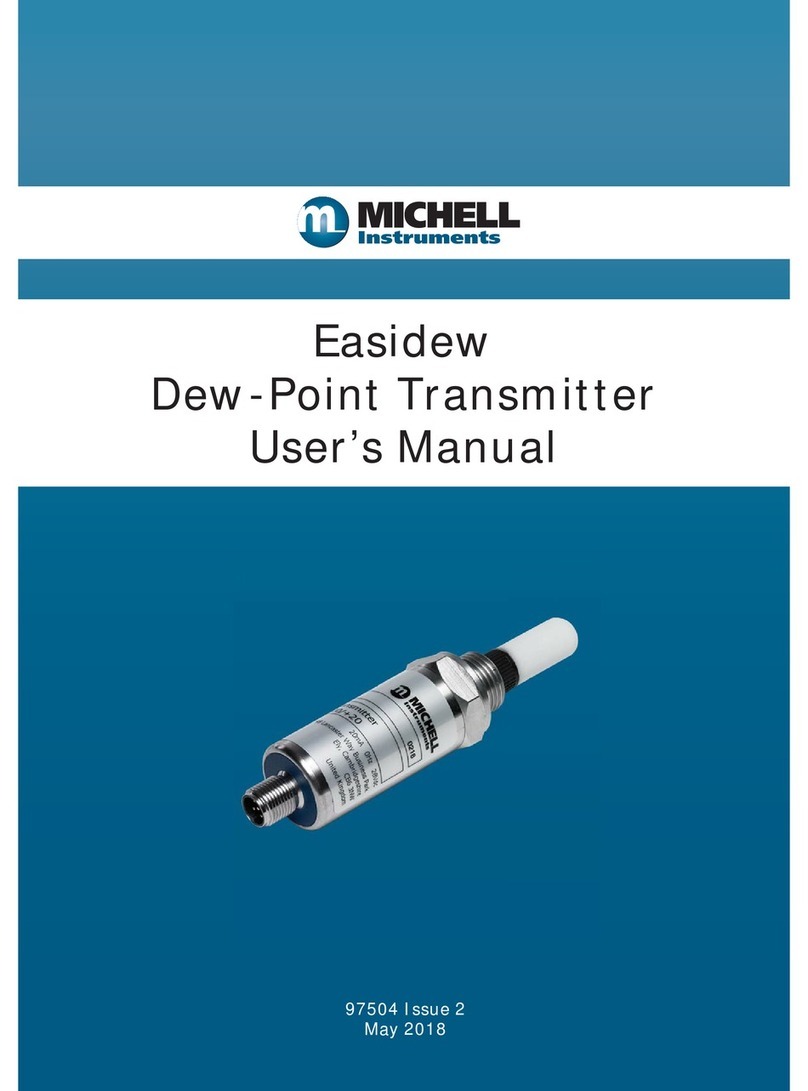
Michell Instruments
Michell Instruments Easidew User manual

Michell Instruments
Michell Instruments Easidew I.S. User manual
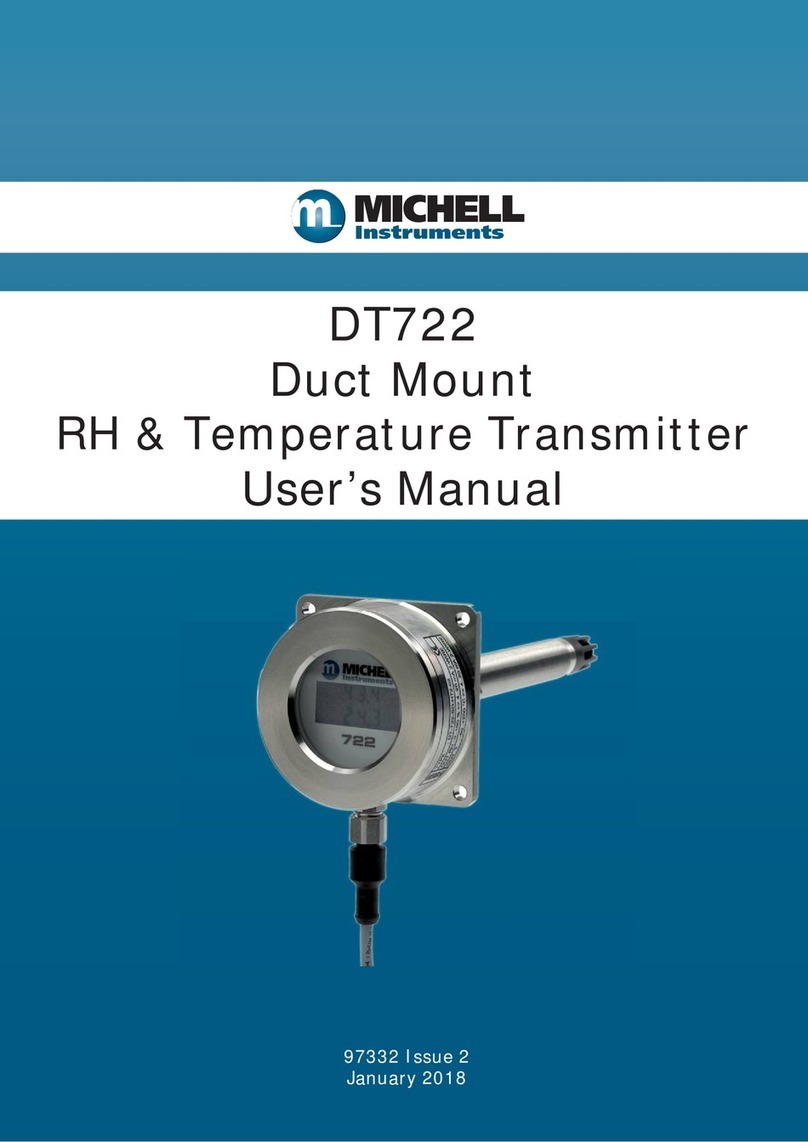
Michell Instruments
Michell Instruments DT722 User manual
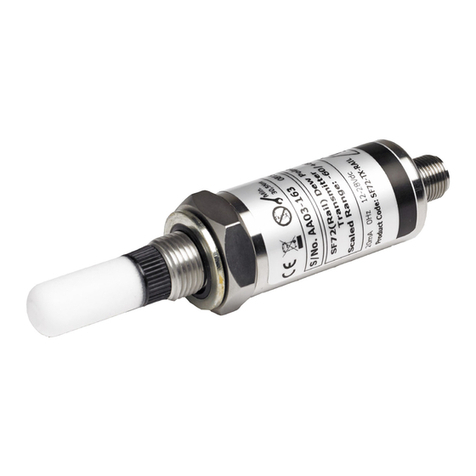
Michell Instruments
Michell Instruments SF72 User manual

Michell Instruments
Michell Instruments Easidew User manual
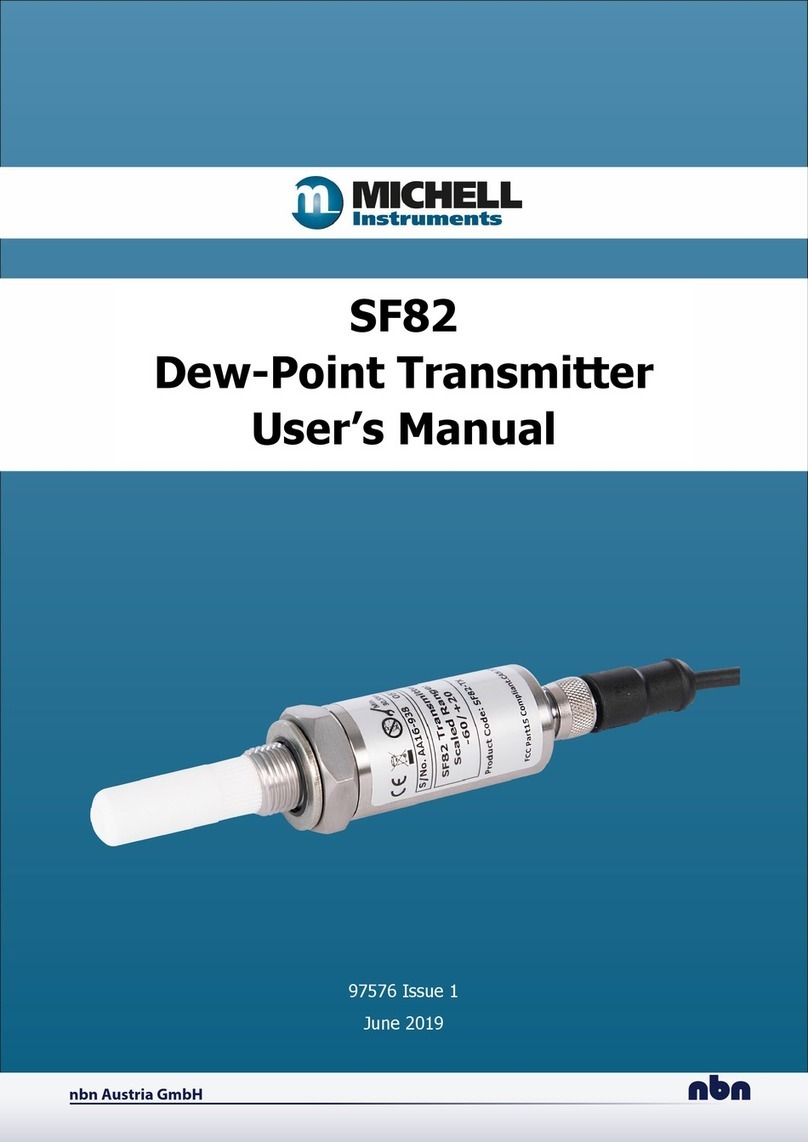
Michell Instruments
Michell Instruments SF82 Series User manual
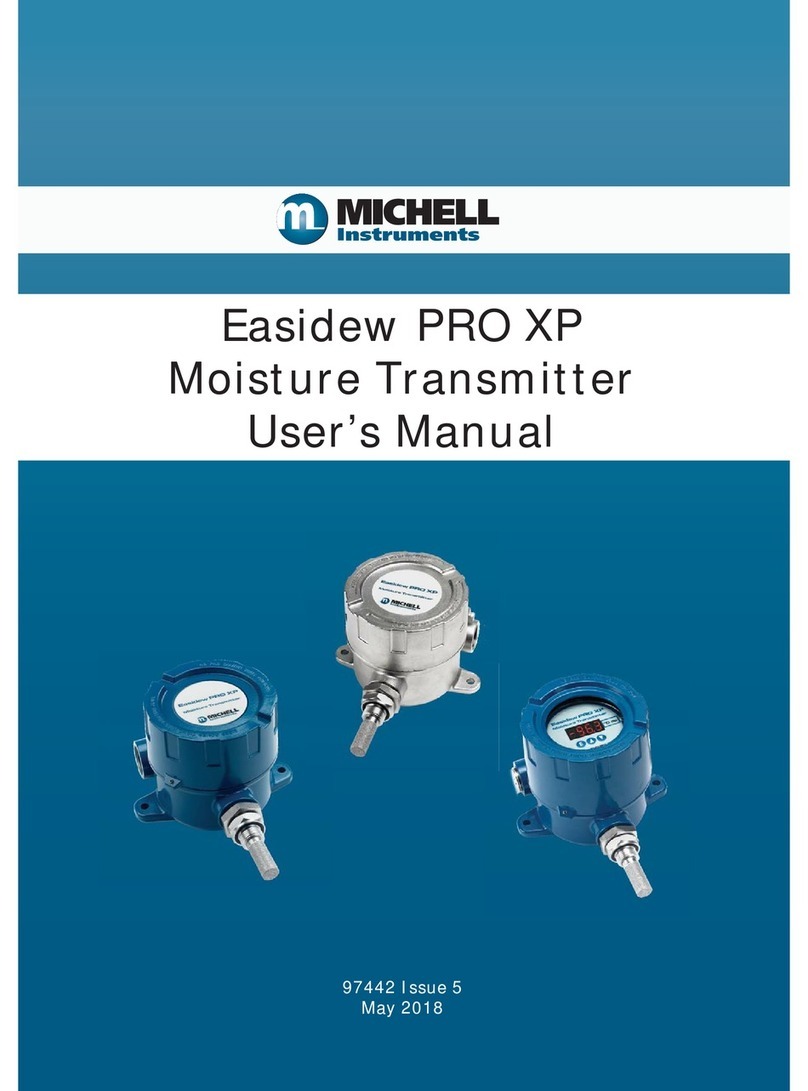
Michell Instruments
Michell Instruments Easidew PRO XP User manual

Michell Instruments
Michell Instruments SF52 User manual
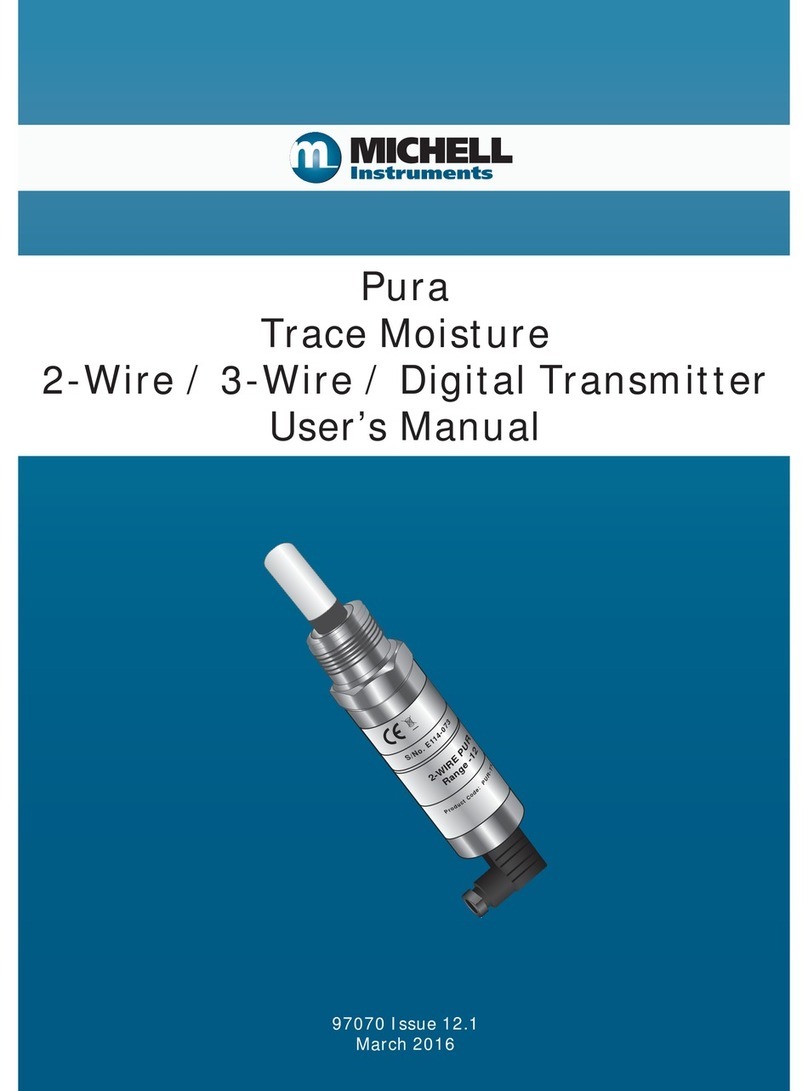
Michell Instruments
Michell Instruments Pura 2-Wire User manual


